Cutty Sark
Royal Museums Greenwich, London, UK
The Cutty Sark is one of the most famous ships in the world and is another London landmark that has been visited. Not a battle-hardened ship, with stories of famous victories. Instead it was a state-of-the-art and record-breaking tea clipper. The Cutty Sark now resides in Maritime Greenwich close to the banks of the Thames.
It is an award-winning visitor attraction and is part of the Royal Museums Greenwich site which also includes the National Maritime Museum, the Queen’s House and the Royal Observatory. Join me as I explore this iconic ship and learn about its dramatic life, the tea trade and how it was saved before coming to ‘live’ in London.
Cutty Sark
The ship was built by Scott & Linton at their premises Woodyard at Dumbarton on the bank of the River Leven, Scotland. It was commissioned by John Willis. John had retired from sea to take over his father’s established shipping business. John paid Scott & Linton £16,150 to complete the works by July 1869. Design problems resulted in cashflow issues which meant that works were suspended before creditors, most prominent among them being William Denny & Brothers, completed the building.
The Cutty Sark was a clipper ship which was designed for speed. The Cutty Sark’s clever design, neither a wooden nor an iron ship but a composite construction. This meant that there was more space for storage as well as having high speed. 138 iron frames and over 20,000 bolts were used to construct the Cutty Sark. The hull was sheathed up to the waterline with thin plates of Muntz metal (this was done to protect the hull and ensure it wouldn’t slow down).
The main mast is 153 feet high and if all the sails were out, they would measure 32,000 square feet in total. The Cutty Sark is 64.7m long and 11m wide. Its Scottish origins meant it was given the name Cutty Sark, which means ‘short skirt’ and came from the garment worn by the witch Nannie in Robert Burn’s Poem ‘Tam o’Shanter’.
China Tea Trade
Walking on to the ship you’re immediately greeted by differing educational stations where you can learn about the China Tea Trade, Opium wars and the Cutty Sark’s history. The British have a reputation for drinking tea, but did you know that it didn’t reach these shores until the 1650s. This was primarily due to Catherine of Braganza (wife of King Charles II), who was from Portugal where tea drinking was already popular.
At the time tea was heavily taxed which meant that only the higher echelons of society could afford to enjoy drinking the tea. But, by the 19th century taxes were slashed. This was because of the extensive smuggling network supplying tea and driving its popularity across the nation. As a result, the great tea races were born. Ships were built for speed and competed to be the first boat back carrying the cargo. These races were the reason that the Cutty Sark was built.
The Cutty Sark would complete only 8 of these races. As steam ships developed and the opening of the Suez Canal happened making the ship almost redundant.
Australian Wool Trade
Having been forced out of the tea trade, the Cutty Sark entered the Australian wool trade in 1883. It was here that the she made her name. Upon its first entry in a race to sail halfway round the world, it beat its competitors by 25 days in 1883 before, in 1886, Captain Richard Woodget mastered the ship and set a record of 73 days for the trip from Sydney to London.
The wool trade was to succumb to the same fate as the tea trade as the steam ships made their way into the market. Not making money, the Cutty Sark was sold to a Portuguese firm.
Portuguese Ownership
The purchasers of the Cutty Sark were the Ferreira & Co. of Lisbon who paid £2,100 for her. Upon acquiring the ship, the owners renamed it Ferreira, and it became a cargo ship. It was responsible for transporting goods between Portugal and countries in its own empire. The Cutty Sark managed to come through the First World War unscathed but was starting to show signs of ageing.
A stroke of good luck occurred when, after suffering damage during a storm, she was sent to Falmouth for repairs. It was here that a retired sea captain, Wilfred Dowman, recognised her and was determined to save her. He paid £3,500 to buy her, which was more than she was worth, and more than Ferreira & Co had paid for her.
Cutty Sark’ first Restoration
Wilfred completed the purchase in October 1922 and made plans to restore the Cutty Sark to its appearance in 1870 with help and support of his wife Catherine. They succeeded and in 1924 they opened the ship as visitor attraction and training ship for cadets. It was to stay in Falmouth till 1938.
Wilfred died in 1936 on a homeward voyage from the West Indies and was buried at sea. Wilfred’s widow gave the Cutty Sark to the Thames Nautical Training College along with a generous gift of £5,000 to help with its maintenance. The ship was taken from Falmouth in 1938 and remained as a cadet ship until the end of the Second World War.
With the changing times the Cutty Sark became redundant as more modern ships were utilised. The college took possession of HMS Exmouth and started ploughing its resources and funds into that ship. The Cutty Sark had become unloved and unwanted.
Cutty Sark at Greenwich
The ship’s final saviour was a Frank Carr. He was Director of the National Maritime Museum (mentioned above as one of the 4 museums that make up the current Royal Maritime Museums). Frank set about forming the Cutty Sark Preservation Society. He managed to persuade HRH The Duke of Edinburgh to join who provided much support and enthusiasm. The funds were raised and after a short period of display it was moved into a purpose-built dock.
And so, the Cutty Sark came to her final resting place, a memorial to Britain’s illustrious maritime history. Following further restoration, the Cutty Sark was opened by the late Queen Elizabeth II in 1957. The Cutty Sark would go on to be one of London’s famous and most successful tourist attractions.
A significant report was completed in the mid-1990s that highlighted that without further work the ship would cease to exist. Thankfully the funds were raised with the help of the Heritage Lottery fund and work began in late 2006. In May 2007 a fire broke out which delayed the project but thankfully didn’t destroy the ship. The works were completed, and the Cutty Sark was finally re-opened on 25th April 2012 by her Majesty Queen Elizabeth II. This was the second time, 55 years after the last time she did the honours.
Conclusion
This completes an educational visit to the iconic Cutty Sark. Built for speed in the transportation of cargo and exclusively for the tea trade, she had a very small window of operation, before different ways have been found to preserve her. She was a record breaker when she started to ferry cargo for the wool trade.
My visit taught me about the tea trade and the Australian wool trade, both of which I was blissfully unaware. Her home port was London and is fitting that this is where she found her final resting place. A big thank you to all those who helped preserve her for future generations to enjoy and to learn and appreciate the history that made this country great.

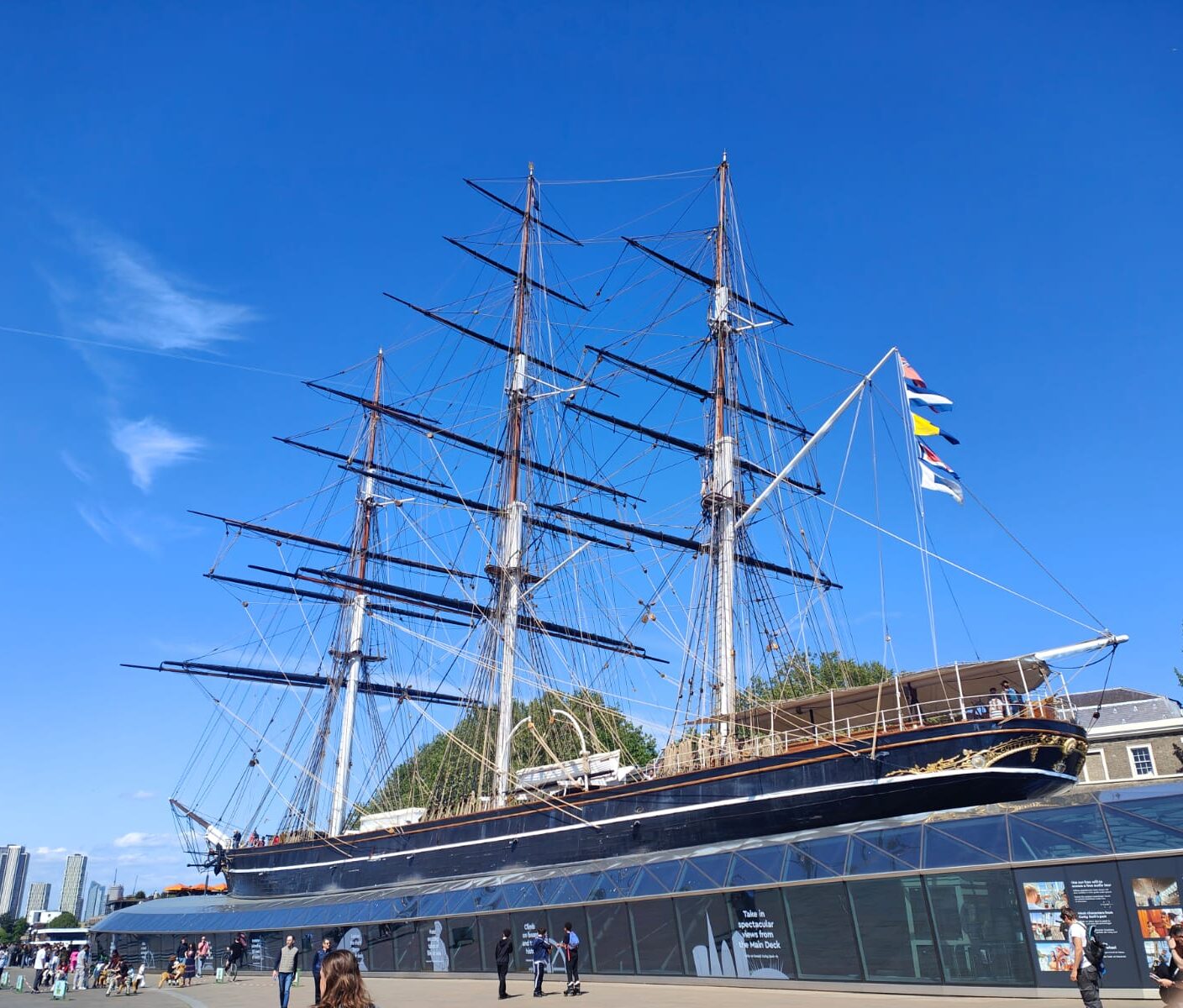
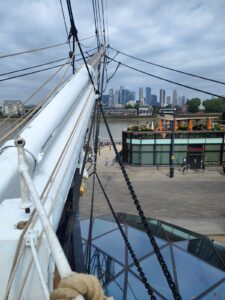
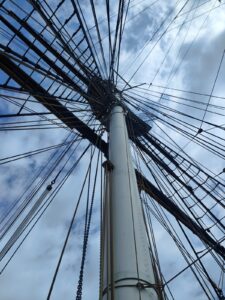
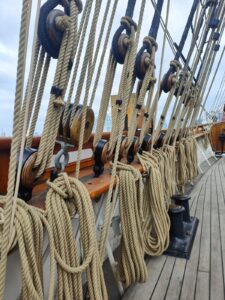
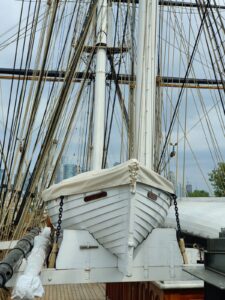
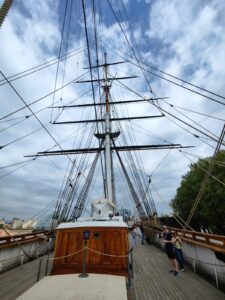
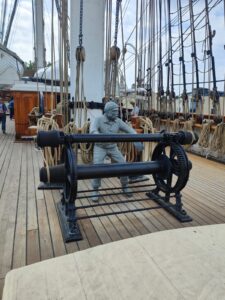
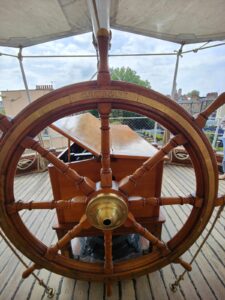
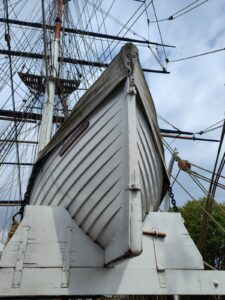
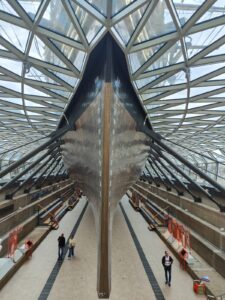
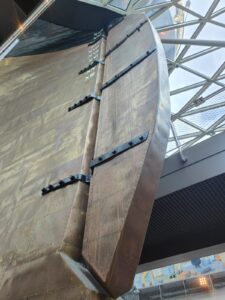
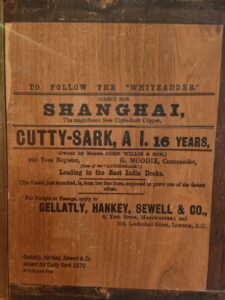
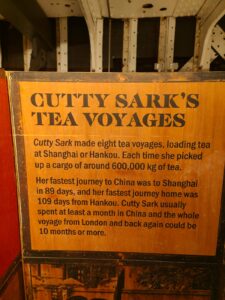
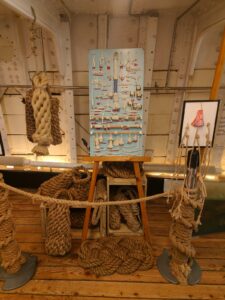
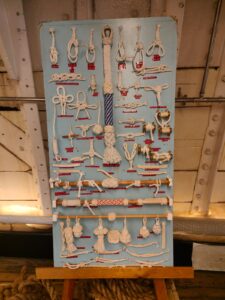
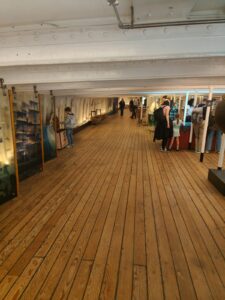
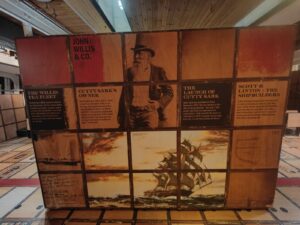
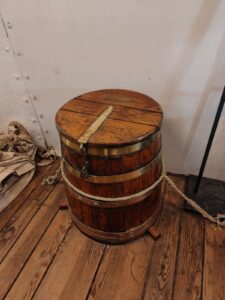
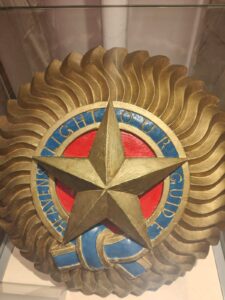
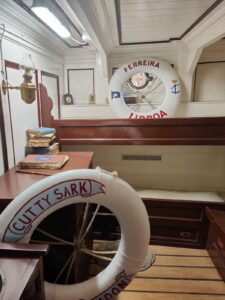
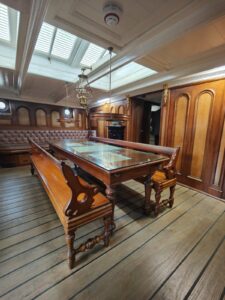
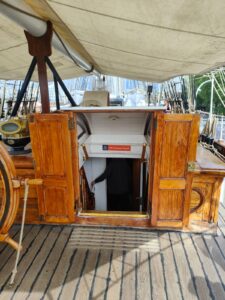
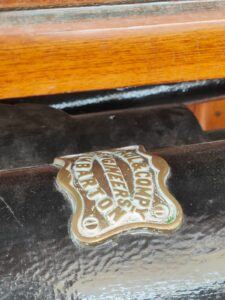
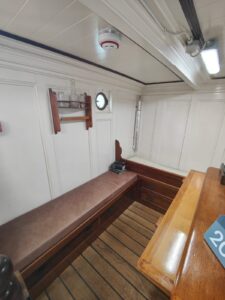
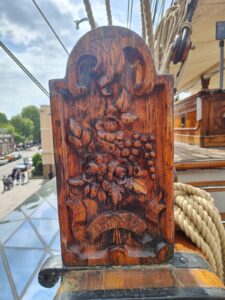
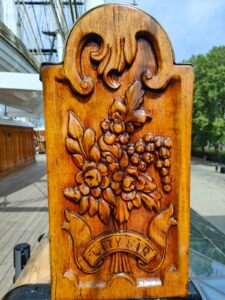
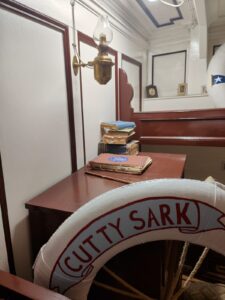
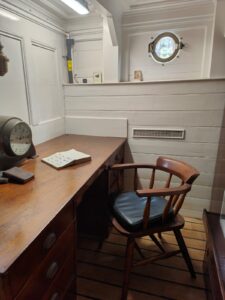
Looks like you had good weather to explore. Just spoken with your cousin who says that his favourite pub, the Gipsy Moth, is close by so there’s a bit of discussion surrounding Greenwich in this house.